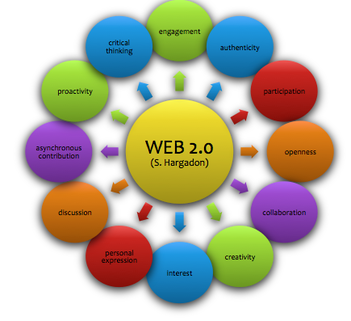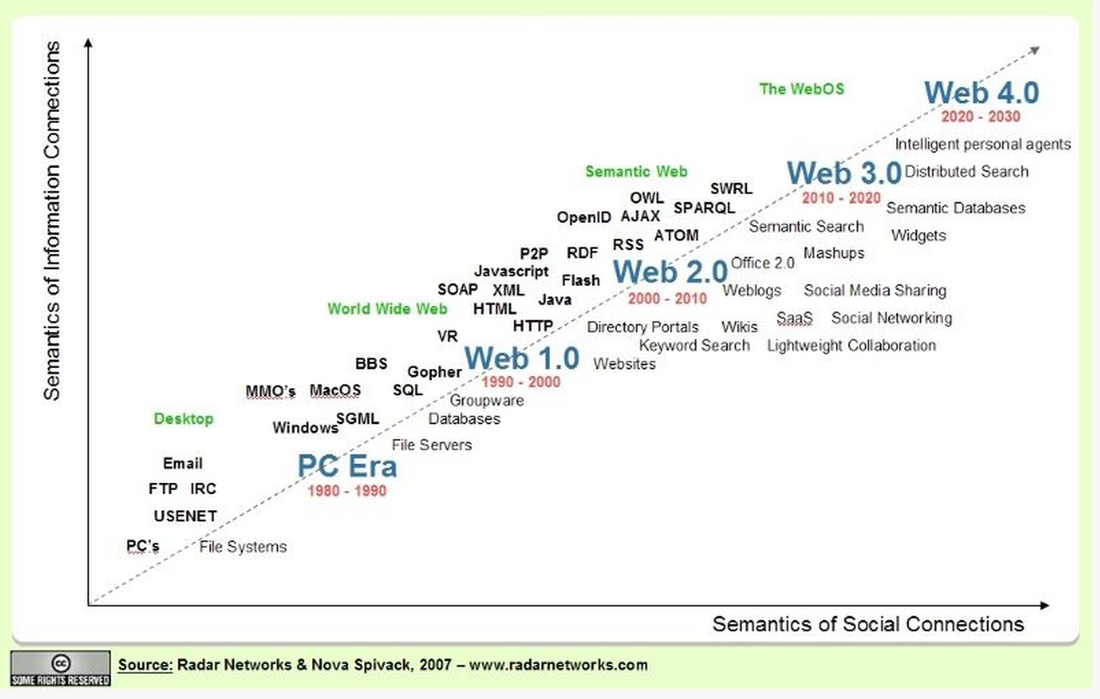2.1 What is Web 2.0?

Defining Terms
Tim O’Reilly is attributed with coining the term ‘Web 2.0′. His definition is:
“Web 2.0 is the network as platform, spanning all connected devices; Web 2.0 applications are those that make the most of the intrinsic advantages of that platform: delivering software as a continually updated service that gets better the more people use it, consuming and remixing data from multiple sources, including individual users, while providing their own data and services in a form that allows remixing by others, creating network effects through an ‘architecture of participation’, and going beyond the page metaphor of Web 1.0 to deliver rich user experiences.” (Bell, pg. 3)
O’Reilly provides an update to this definition in this blog post: http://radar.oreilly.com/2006/12/web-20-compact-definition-tryi.html
Tim O’Reilly is attributed with coining the term ‘Web 2.0′. His definition is:
“Web 2.0 is the network as platform, spanning all connected devices; Web 2.0 applications are those that make the most of the intrinsic advantages of that platform: delivering software as a continually updated service that gets better the more people use it, consuming and remixing data from multiple sources, including individual users, while providing their own data and services in a form that allows remixing by others, creating network effects through an ‘architecture of participation’, and going beyond the page metaphor of Web 1.0 to deliver rich user experiences.” (Bell, pg. 3)
O’Reilly provides an update to this definition in this blog post: http://radar.oreilly.com/2006/12/web-20-compact-definition-tryi.html
What about Web 3.0? or Web 4.0?
|
The semantic web, otherwise called Web 3.0, is developing in current digital environments. This 'intelligent web' is semantically linked to individuals. Characteristics of Web 3.0 include openness, interoperability, global data collection, 3-dimensional creations, information control, all while using semantic technologies. Is Web 4.0 being developed? How will these iterations of digital technology impact teachers and learners?
To learn more about how knowledge construction, personal learning networks and personal educational administration will mean for the future of teaching and learning, read Jason Ohler's article The Semantic Web in Education. |
|
References and Resources
|



